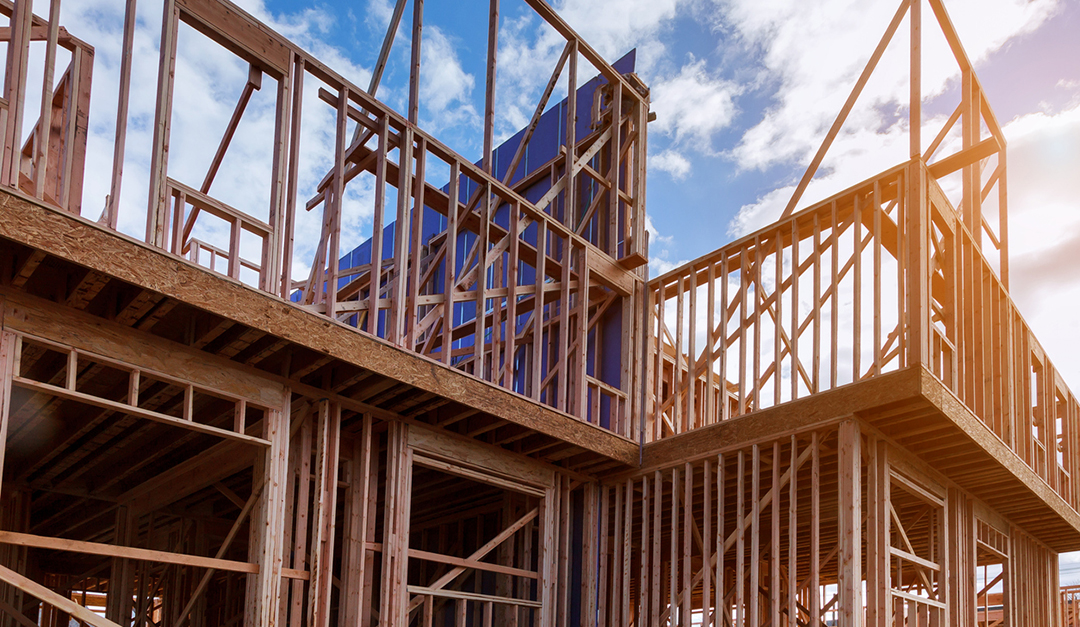Single-family permits saw an 11.9 percent increase in May, signaling continued market growth despite the pandemic. Additionally, total housing starts increased 4.3 percent to a seasonally adjusted annual rate of 974,000 units, according to the U.S. Housing and Urban Development and Commerce Department.
The May reading of 974,000 starts is the number of housing units builders would begin if they kept this pace for the next year, according to the National Association of Home Builders (NAHB). Single-family starts increased 0.1 percent to a 675,000 seasonally adjusted annual rate, following an upward revision for the April estimate. Multifamily numbers increased 15 percent to a 299,000 pace.
The Breakdown:
Housing Starts: 974,000 (+15.5% month-over-month, +6.2%year-over-year)
Multifamily Starts: 291,000
Single-Family Starts: 675,000
Building Permits: 1.22 million (+1.1% month-over-month, +1.0% year-over-year)
Multifamily Permits: 434,000
Single-Family Permits: 745,000
Completions: 1.15 million (+12.3% month-over-month, +9.8% year-over-year)
Multifamily Completions: 310,000
Single-Family Completions: 791,000
What the Industry’s Saying:
“The interest in homebuying is strong as reflected in the surge in mortgage applications to buy a home. However, there is not enough supply to meet demand. Though housing starts in May recovered slightly from the prior month, this marks two consecutive months of depressed levels—down by more than 20 percent from one year ago—due to the disruption from the economic lockdown. Significant growth in new home construction, however, is required in the upcoming months and possibly even stretching into the next three years. Before the pandemic, America faced a housing shortage of around 5 to 6 million homes due to multiple years of underproduction of new homes. Now, in the middle of 2020 the housing shortage has intensified. Consequently, home prices will be pushed higher, thereby making ownership opportunities for first-time buyers more difficult. More homes need to be built.
“With much of the nation’s attention currently focused on combating racial inequality, particularly as it relates to African Americans, the following five-point plan would increase the number of African-American homeowners and help close the persistent gap in homeownership rates between whites and African Americans:
“Build more homes to increase supply: The lack of housing supply makes converting from renting to owning very difficult. The lack of viable purchase options and resulting competition rapidly pushes up home prices, precluding some potential first-time buyers from entering the market.
“Build more homes in Opportunity Zones: NAR strongly supports Opportunity Zones as a means by which to invest in the revitalization of economically-distressed areas.
“Increase access to down payment assistance: Saving for a down payment can be the biggest hurdle for renters wanting to become homeowners. In recent years, a growing number of first-time buyers received help from family members with their down payments. However, due to historical gaps in accessing and accumulating wealth, it’s much more difficult for African Americans to obtain substantial financial assistance from family members. Therefore, increased access to federal down payment assistance based on a certain income threshold is vital, particularly for African Americans.
“Strengthen FHA’s loan program: FHA loans have been an important source of financing for first-time buyers and minority households. Shifting federal dollars to strengthen the FHA program could lower mortgage insurance premiums and monthly mortgage payments.
“Expand alternative credit scoring models: Expanding credit scoring models to include rent and utilities payments – and thereby adding more positive payment histories to better demonstrate financial responsibility—can help increase homeownership opportunities for minority and first-time buyers.” — Lawrence Yun, Chief Economist, National Association of REALTORS®
“With economies reopening, home builders are slowly regaining traction in their goal to match surging buyer demand. Last month’s increase in construction will help ongoing inventory issues and it’s encouraging to see low interest rates support buyer demand.” — Bill Banfield, Executive Vice President of Capital Markets, Quicken Loans
“We are seeing many positive economic indicators that point to a recovery, including low interest rates, rising demand and an increase in mortgage applications. Single-family and multifamily housing production are on an upward path while overall permits, which are a harbinger of future building activity, posted a double-digit gain.” — Dean Mon, Chairman, NAHB
“The May housing report is consistent with the positive results of the NAHB/Wells Fargo builder sentiment index, and we expect this momentum to continue as economic activity recovers. In another promising sign, single-family permits are up almost 2 percent on a year-to-date basis and builders are bringing back thousands of workers laid off in March and April to meet renewed demand.” — Robert Dietz, Chief Economist, NAHB
“Housing construction inched up in May, but single-family starts remained almost 18 percent below last year’s pace, and multifamily starts were 33 percent lower. At only 9 percent below last year, new permits are recovering more quickly and are an indication that the pace of construction should continue to improve in the months ahead. MBA’s data on purchase applications clearly show that housing demand is brisk, supported by record-low mortgage rates. However, unless additional housing inventory is available, this increase in demand cannot be matched by the expected robust increase in home sales. The only bright side of low supply levels are that they should continue to support current home values.” — Mike Fratantoni, SVP & Chief Economist, Mortgage Bankers Association












